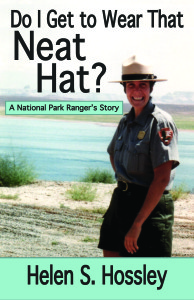Most Rangers I’ve met love what they do. They demonstrate a gentler way of living. An intrinsic value of imparting a little bit of wisdom, demonstrating a gentler way of living so others can be inspired to do the same and, hopefully leave the world in better place.
I recently read an article highlighting that travel isn’t accessible to everyone. While that may or may not be true for you, the reader, there’s something to be said about the power in dreaming or visualizing. It is with that notion that I like to write articles about National Park sites. I have a list. It’s contains the National Park sites that I want to visit whether virtual or in person.
Last month I had the opportunity to visit Great Sand Dunes National Park in Colorado. However brief the visit it gave me an opportunity to be in a completely different element from my day-to-day life. It reminded me of a day, long ago when I was a ranger walking around the campground at Glen Canyon to drum up an audience for my campfire talk.
During one particular tour, the sunset was especially beautiful, even breathtakingly surreal. The way the sunrays lit up the crimson and orange rocks reverberated into the skyline and highlighted the blue water. I paused taking in the beauty. How I loved being outside at this time of day when being part of nature, not separate from it, seemed so natural. I realized how we have become good at separating ourselves from nature, people, and the world around us. We live in gated communities to keep other people out and we build bigger houses to shield us from nature as a measure of success. And we kill animals to wear their hides so their hides can protect us from the weather.
I looked at the huge metal RVs parked so close to each other in the campground. They had every last comfort of home out here away from civilization—the American Dream of the open road. Yet actually these people were missing nature and the joys of being away from it all to stay inside a tin can parked ten feet from the next tin can.
While contemplating these insights, my moment with the amazing sunset was abruptly cut short by the unwelcome sound of the evening news blaring from a television inside the nearest RV.
Taking full advantage of my uniform, I knocked on the door and let myself in. A man dressed only in shorts didn’t have time to get up from his chair.
“Sir,” I said with authority, “how can you possibly be watching the news when you have the best seat in town for the world’s most spectacular show?”
Shocked at this bold woman ranger standing before him and not knowing what to do, the man got up from his chair and turned off the television. He followed me outside and we both watched the sunset in silent awe. I still wonder if he was too frightened and embarrassed to speak or if he was moved by the experience. I’d like to think that maybe it transformed both of us into better, more appreciative human beings.
National Park Week is taking place April 15 -23 where admission to our parks is free. It’s the perfect excuse to get into our parks and reconnect with nature, explore some amazing places, celebrate our heritage and possibly transform ourselves.
